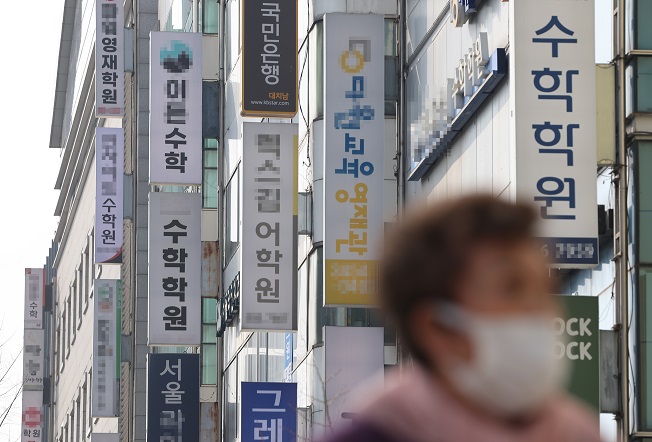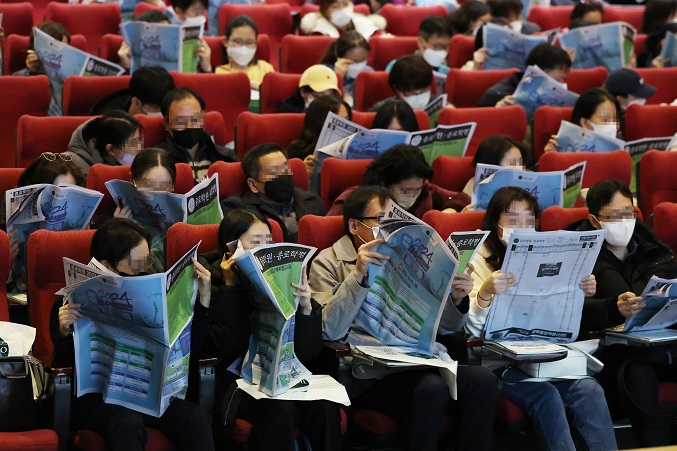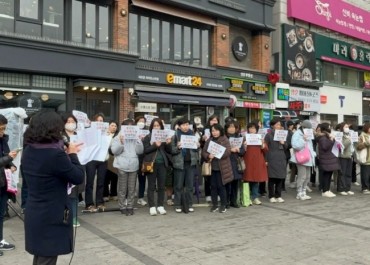
Private education institutes in Daechi-dong in southern Seoul are seen in this photo taken of March 7, 2023. Last year, the total amount of private education expenses reached a record high of 26 trillion won. The increase in private education expenses was steeper for elementary school students than for middle and high school students. (Yonhap)
SEOUL, March 17 (Korea Bizwire) — South Korea’s “medical school craze” has intensified to the point where students as young as elementary school are attending entrance exam classes.
This phenomenon is not limited to the mecca of private education, Daechi-dong in southern Seoul, but is widespread across the country.
This trend has become increasingly controversial due to the heavy burden of private education expenses on parents, even from elementary school.
The increase in private education expenses puts pressure on the economy of ordinary people and reduces their spending power.
The number of “edupoor” parents who spend more on education than on necessities such as food is on the rise. The high burden of private education is also contributing to a declining birth rate, one of the lowest in the world.
According to a recent survey conducted by the Ministry of Education and Statistics Korea, the total amount spent on private education last year was 26 trillion won (US$19.9 billion), up 10.8 percent from the previous year.
This is the second consecutive year of record highs, surpassing the previous record of 23.4 trillion won set in 2021.
The surge in private education expenses is attributed to the acceleration of the “private education frenzy” phenomenon, where even elementary school children are turning to tutoring and hagwons (cram schools).

Parents attend a conference on college admission held at a university in Seoul in this file photo taken on Dec. 11, 2022. (Yonhap)
The excessive ‘medical school fever’ is becoming more severe, with top-tier students choosing to enroll in medical programs first, followed by science programs at prestigious universities such as Seoul National University, Yonsei University, and Korea University.
This has led to concerns about students breaking the pledge of “going to science and technology” and entering medical school instead.
The national science academy schools, which were established to foster science and engineering graduates, are also not immune to the trend, with nearly half of their students applying for medical school in some cases.
This has led to the education ministry recommending sanctions against medical schools that accept too many students from the special schools for talented students.
In 2022, South Korea’s private education expenses reached 1.2 percent of the country’s nominal gross domestic product (GDP), with parents spending significantly more than Samsung Electronics Co.’s total expenditures on research and development (25 trillion won).
This is causing household consumption to shrink, and excellent students are turning away from areas that form the foundation of science power.
Jerry M. Kim (jerry_kim@koreabizwire.com)






